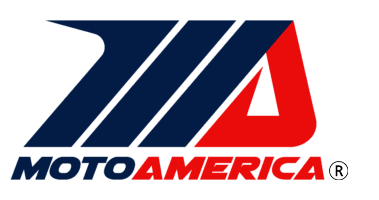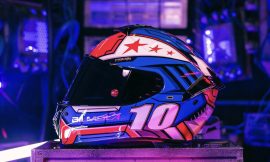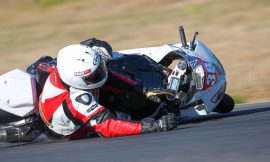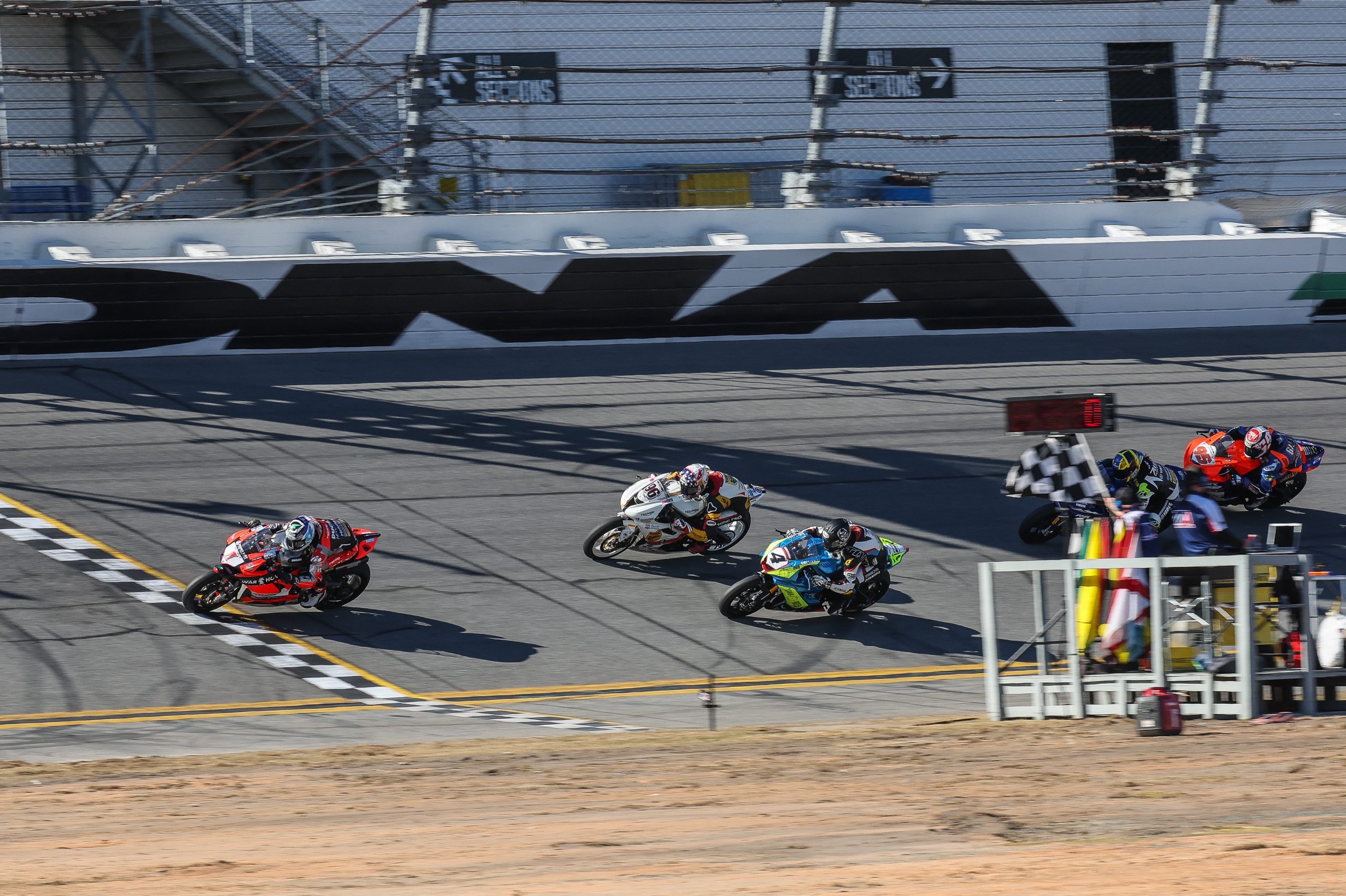
Josh Herrin has won two Daytona 200’s so far in his career, but no one else has won two of them as far apart in years as he did. From his win in 2010 to his victory last year was a span of 13 years. And, the two wins were not only far apart in years, but the two bikes he raced to victory were dramatically different from one another, too. In 2010, he was aboard a high-revving 599cc four-cylinder Yamaha YZF-R6 and last year, he took the checkered flag aboard a torque-monster Ducati Panigale 955cc V2.
This year, he’ll be back aboard the V2 again, this time resplendent in new-for-2024 livery as he represents his team’s new name Only Fans Warhorse Ducati.
While Josh was getting ready this past Saturday night to join his team at Mount Airy Casino Resort in Pennsylvania’s Pocono Mountains for their team’s official 2024 season launch, I had a chance to ask him a few questions about this week’s Daytona 200. Here’s the interview:
Q:
The two bikes on which you won the Daytona 200–in 2010 and then last year–were so different from one another. Do the two wins feel like two totally different accomplishments to you, or did winning last year’s Daytona 200 feel just like it did 13 years ago?
Herrin:
I would say it felt like two totally different things because not only were the teams completely different, but I was on two completely different brands and types of bikes. Plus, I’m a completely different person, too.
2010, that was three or four years after my rookie year. I was still under 21 years old when I won that race. I was 32 years old when I won the race last year. Not only have I matured so much, and I’m a grown man now – it’s nuts to me – but I’m also a father, a husband, and have such a different understanding of racing and life and everything. So, I would say the two are completely different. It was still obviously the Daytona 200, so I was able to use a lot of the same strategies and mindset going into the race. So, it was very different but very similar at the same time.
Q:
In 2010, was that one of the Daytona 200s that was held at night?
Herrin:
Yeah, that was the second night race. I think it was the final night race. I think they only did two.
Q:
I remember, for one of those two night races, you guys had those lights on the bike to signal when you were coming in for a pit stop. Was that the year you won it?
Herrin:
Yeah.
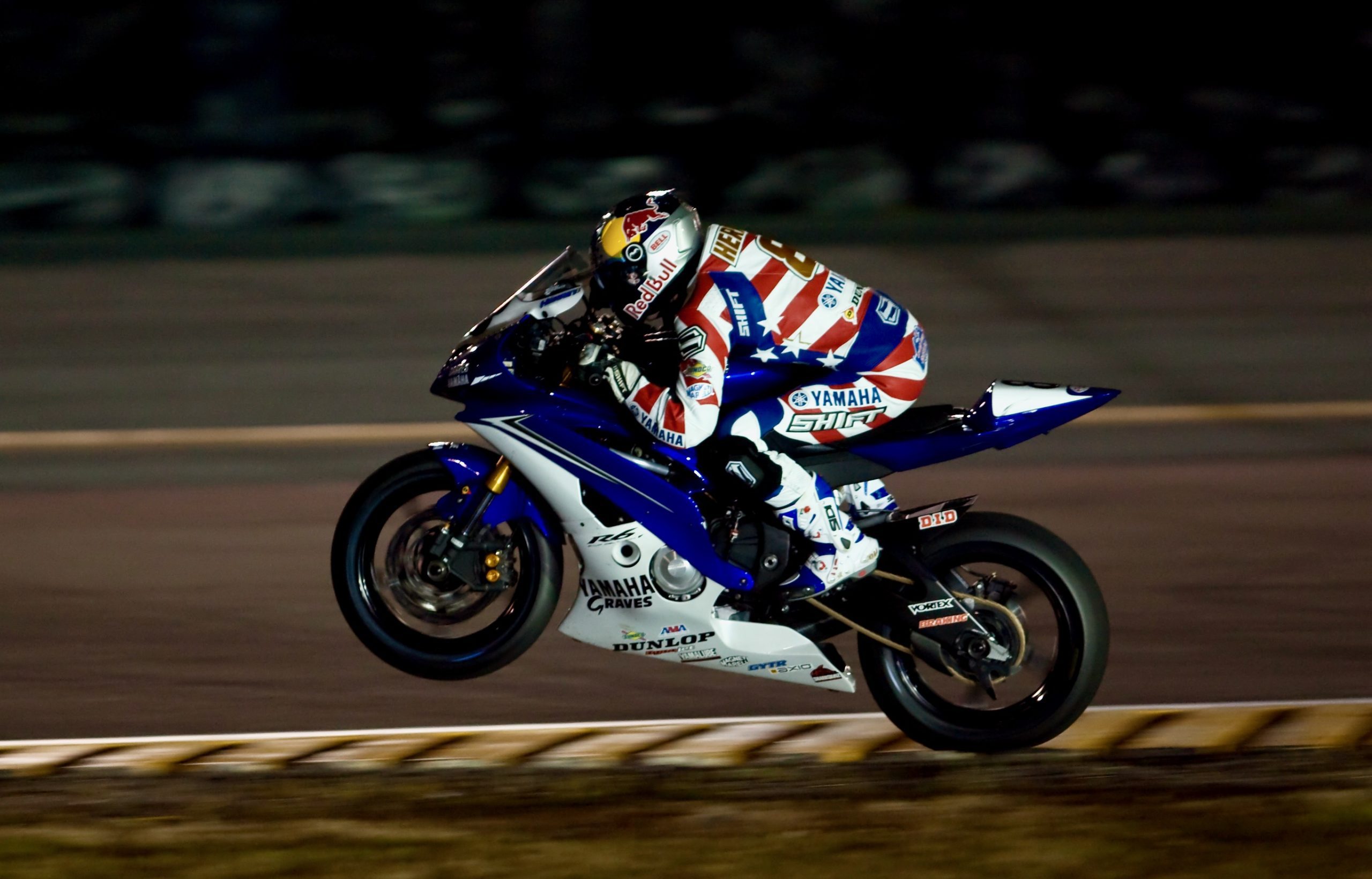
Q:
That was crazy. Wasn’t it really cold, too?
Herrin:
Oh, it was freezing. In the middle of the race, I think I could have passed and broke away a little bit from the pack, because it was just me and Steve Rapp. But my hands were so cold that I had to stay behind him because the exhaust, he had the Ducati 848, and the exhausts were heating my hands. So, I had to stay behind him longer than I wanted to.
Q:
So, without giving a whole lot away, let’s talk about strategy for the Daytona 200. Do you break the race down into sections, and do you have a different strategy in the beginning of the race versus the halfway point versus the end?
Herrin:
It changes every year. Depending on your speed and how quick the bike is. You have to come up with different strategies depending on how fast your pit stops are. Obviously, the race changes so much, and you expect to be battling with two or three guys, and then, sometimes, there’s 15 riders going for the win. So, strategies always change so much, but with all the experience that I have at this race, it’s nice because pretty much any situation now that we get put in, I’ve experienced it before. So, I have some type of answer for whatever goes on.
Ideally, it would be great if you could just break away, but with Daytona being Daytona, it’s really hard. I think that this year our pit stops should be a little bit better than they were last year. My strategy is always to try to get into the pits first and have a really fast pit stop and be able to break away, but that’s always really hard. Last year, we came out of the pits after my second pit stop four seconds behind. I had to be the one to battle as hard as I could to get back up to the front. So, it’s really hard to break away at Daytona.
Q:
That leads me to this question: Is it important to lead the race at some point towards the end? Certainly, when you cross the finish line and the checkered flag comes out, you’ve got to be leading then. But my point is, do you need to be up front earlier in the race? You mentioned “breaking away.”
Herrin:
I like to try to be up at the front, just because it gets me in that mindset. If I’m just sitting in the back the whole race and watching these guys, you got to make a bunch of different attempts at a bunch of different ways to win that race on the draft, exiting the chicane, setting up out of the horseshoe in the back. I think for me, I like to just put myself in all sorts of different scenarios throughout the race. It’s nice to lead. It’s nice to sit a little bit further back in the pack, see how much power your bike has, and just kind of come up with different game plans as you go. It’s one of the only races that you can sit and think about things for so long on the banking. So, it’s nice to just put yourself in different situations throughout the race and strategize and see who you like riding with, because if there’s one guy that you really like to ride with out of the pack, you can possibly signal with him and try to break away from the other guys if you enjoy riding with him and you guys are kind of vibing well.
Q:
Personally, I think the Daytona 200 is an endurance race because of the number of laps, the pit stops, and everything, but some people don’t really think it is because it’s one rider doing it. Do you feel like it’s an endurance race? Obviously, it’s longer than a normal sprint race, but does it feel like a long race, or does it still go by pretty quick for you?
Herrin:
It takes a while, I think. It’s weird. It is an endurance race to me, or let’s just say, if you don’t want to call it an endurance race, let’s just call it a marathon instead of a sprint. It seems like the race goes on and on and on forever, but it’s by far the easiest track that we race on, physically. So, the only thing that really gets tired at Daytona is your neck and your back just from being in that position for so long and having to tuck in so tightly on the banking. But it’s physically the easiest race of the year, even though it’s three times longer than any other race we do. It does seem like it takes a long time. But, the final two laps, or the last stint, is what goes by really quick. Once you make your second pit stop and it’s that final 17 to 20 laps, depending on when you pitted, that goes by really quick. Then, you’ve got to really focus and figure out what you’re going to do at that point.
Q:
In a normal sprint race, you may not feel the difference in the fuel load at the end of the race compared with the beginning, but in the 200, you’re going from a fully topped-off fuel tank down to the point where you need to make a pit stop for gas. Do you notice the change in the fuel load right after a pit stop? Does the bike feel different right after you fill up?
Herrin:
Yeah. On the Ducati, I’ve noticed that the fuel load lightens the most out of any bike I’ve ever ridden. I don’t really know why, but I just notice the thing getting a lot better to ride towards the end of the stints. It’s not like it’s bad to ride at the beginning, but you can tell that it’s got the fuel in it and then the thing really likes to ride on a low fuel load. So, towards the end for me, when a lot of people are getting tired, it seems like the Ducati just gets easier and easier for me to ride. It just starts clicking. Things just start getting easier.
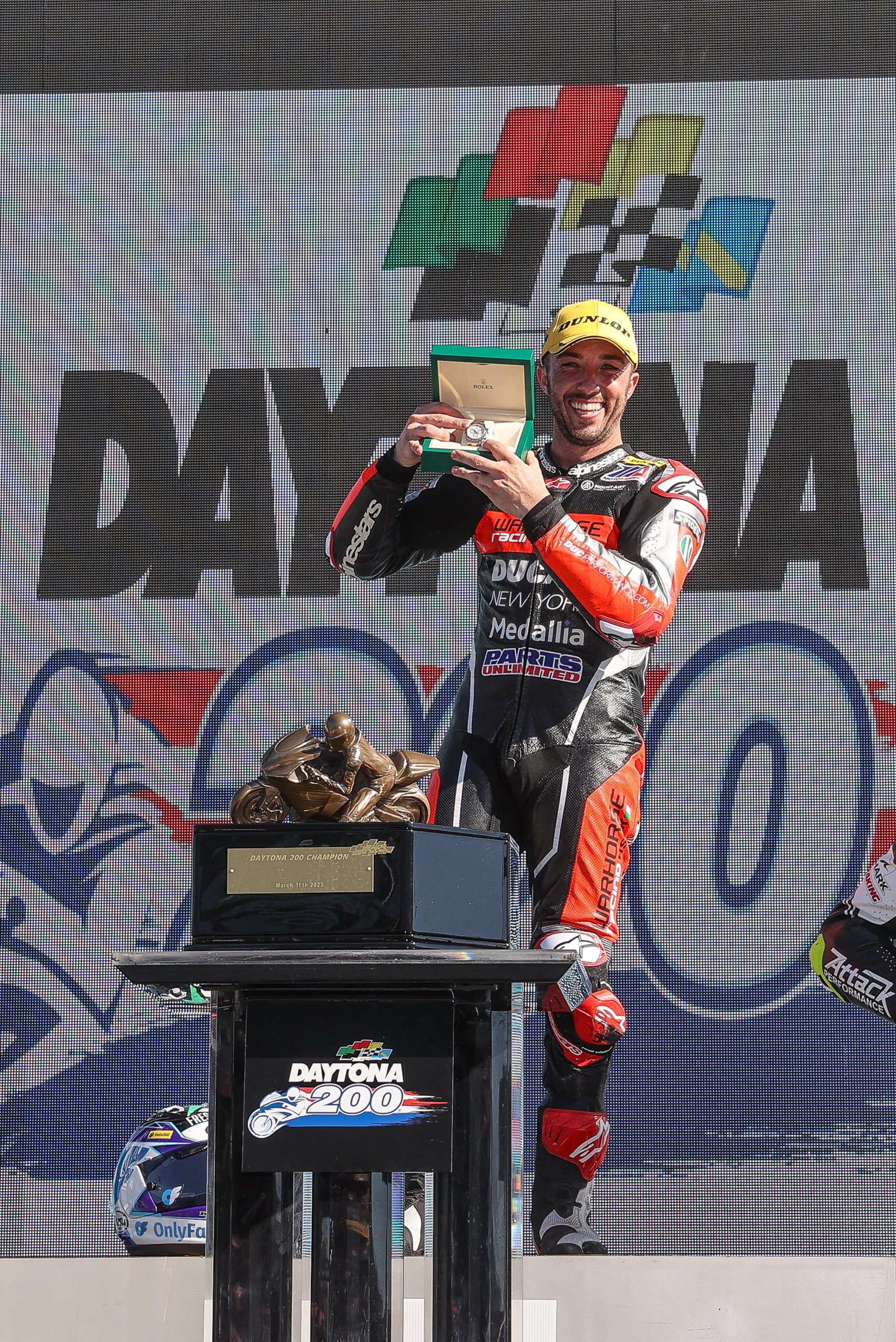
Q:
How important is it to earn the pole position for the Daytona 200?
Herrin:
In my mind, it’s like ingrained in me that I have to try to get pole because the Daytona 200 used to always award the Rolex to the polesitter. So, for so many years, I practiced and practiced and practiced on getting better in qualifying. Not just for Daytona, but just, in general. When I finally got the pole at Daytona, they stopped awarding the Rolex for pole and they started giving it to the race winner. But I’ve earned the pole for the last three Daytona’s that I’ve qualified for. I’ve raced in it three out of the past four years and I’ve gotten pole at all three of those attempts. For me now, it’s fun. I like how they hype it up. I think it’s important. But I don’t think it really makes your race, though.
Q:
So, the pole is almost a challenge separate from the race itself, but it doesn’t mean that if you start on pole, you’re going to win the thing. The race is 57 laps, so a lot of things can change.
Herrin:
Yeah. The race either gets canceled, you run out of gas, or you win. That’s what happened to me the last three poles (laughs).
Q:
(laughing) Yeah, you’ve seen it all. 2020 was strange with the COVID thing. You qualified on pole, and then, they cancelled the race. And then, there was 2022 when you ran out of gas. You have had some unusual Daytona 200s these past few years.
Let’s talk about the final lap. Do you have any particular strategy, knowing that you’re coming up on the checkered flag? Where do you want to be coming out of the chicane? Is there any concern about leading coming out of the chicane? Do you not want to lead? Tell me what your strategy is at the end of the race.
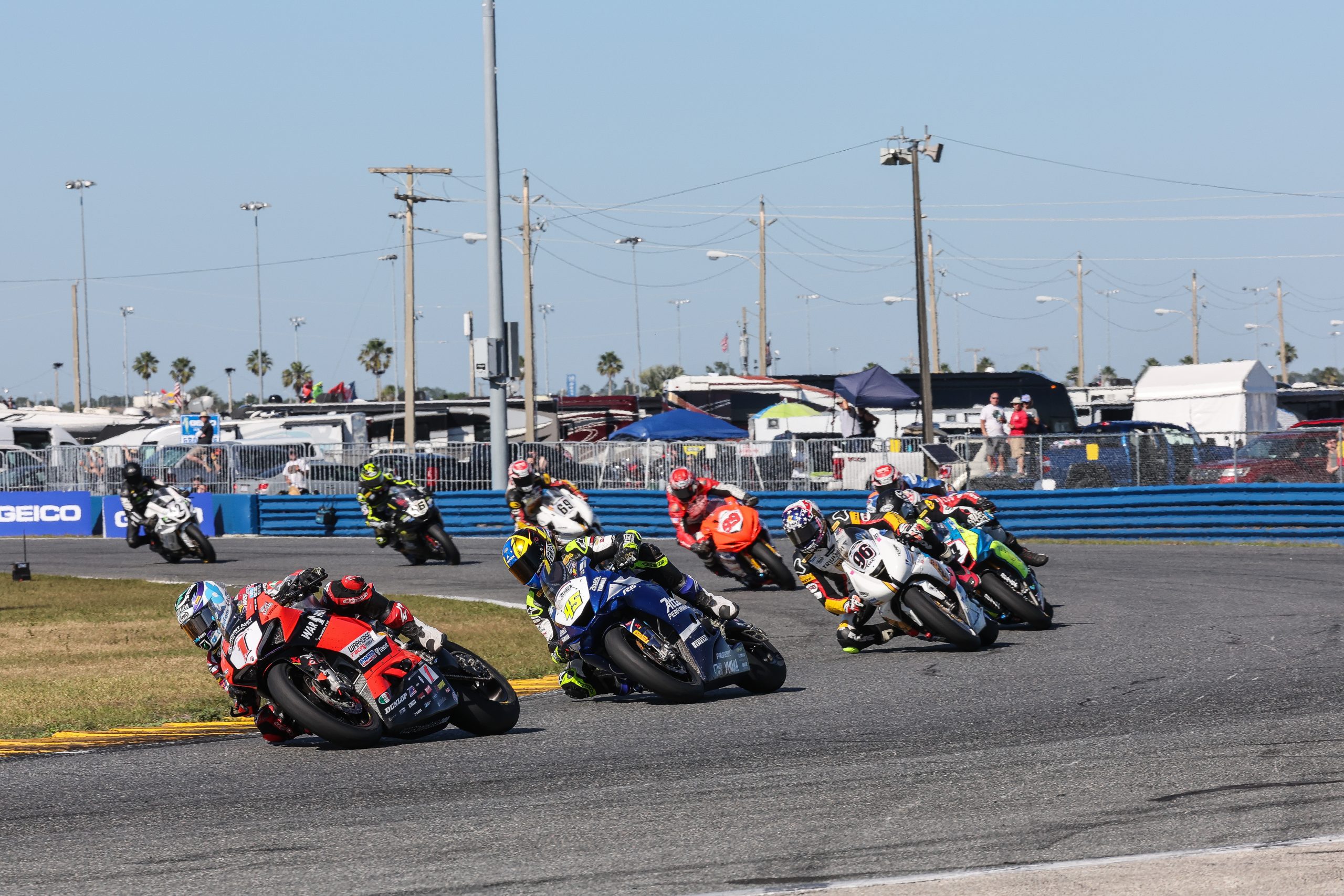
Herrin:
You’re thinking about strategy during the whole race, and then it all gets thrown out the window on the final lap because everybody is in a panic. Especially at Daytona with the draft. Typically, you don’t want to lead on the final lap, but if you’ve got a little gap, I’d rather just pin it. If I have a little gap, I’d rather pin it and just try to open that lead up a little bit more in the infield and then just hope that I can hang on. But if you don’t have a big lead like I didn’t last year–I ran wide right before the back banking to try to let all those guys go by because I knew I was going to get swallowed up–I knew I didn’t want to be leading going into the chicane on the back straight with a tight group behind me. I’d rather be second or third so I can make a play for the flag and decide what’s going to happen. I think I had (Cam) Petersen and (Josh) Hayes go by me. Then I was like, ‘Crap, I want to be in second.’ So, I got up around Petersen.
Going into the chicane last year, because the torque of the Ducati is so good, I was able to use second gear in the chicane, where I used third gear on all the previous laps. I allowed Hayes to kind of get a gap a little bit by being in second because the bike slowed down a little bit more. He got a really good run out of the chicane, like I knew he would. Then, I just hammered the hell out of it in second gear. The guys behind me got their normal third-gear chicane that turned into a bogging exit because I was anticipating what was going to happen. So, I went a gear lower to get better torque. They were in third, so they were bogging down coming out of the chicane. So, I pulled a little gap on them and basically just timed it perfectly to where, even on the banking, if you were able to go and look at the data or somehow, we could show it, I rolled off. I saw that I was catching Hayes a little bit early, so I rolled off.
I’m not trying to sound big-headed, but I timed it perfectly rolling off on the banking and dropping down to second gear in the chicane and all that. It was perfect. I couldn’t have done it any better if I had a chance to try it again. But, like I said, it’s different every race. You’ve got to come up with a different strategy every time. It’s never the same. Daytona is never the same.
Q:
At Daytona, it seems like using the draft is critical. To me, it’s a major factor pretty much every time, no matter what. For you at Daytona, has the draft been a factor in every single Daytona 200 you’ve ever raced, whether or not you’ve won?
Herrin:
Oh, yeah. Honestly, I think that Ashton Yates and me riding at the Herrin Compound for so many years on stock XR100s and drafting each other, it played to such an advantage for me over the years of just drafting and kind of having these strategies. Just coming out of corners in different ways and just timing the draft and all that stuff. We used to play around with that so much, just trying to figure out which way worked for the best lap time. When to time it and slingshot by, and all sorts of things like that. The draft will always play a part in Daytona unless you have a bike that’s just way faster than everybody else’s and you don’t need the draft. But, for me, that’s never been the case. I think it will always play a huge part in Daytona.
Q:
Do you try to keep your bike up higher on the banking in order to use the gravity going downhill to get a better run out of the banking?
Herrin:
Yeah. For me, I would say I think riding around the top is faster, but also, I think it wears your tire out less. If I’m able to carry a wider-radius corner, I’m going to be on the edge of the tire less and overall, I’ll have a better tire at the end of the race. I’m not sure what the mile-an-hour difference would be, or lap-time difference would be if I was in the middle of the track or all the way down at the bottom, but I don’t think it would be a whole lot different.
Q:
With the single-sided swingarm on your Ducati Panigale V2, is it an advantage for you and your team when you do your pit stops?
Herrin:
Yes, but the (Vision Wheel) M4 (ECSTAR Suzuki) team last year, they got down to really fast pit stops. All the teams, it seems like they caught up from the year before. But the thing that I think we have the biggest advantage with is just less risk of something going wrong during the pit stop, just because of how easy it is to get the wheel off and not having to mess with the chain and all that stuff. It just goes on super easy. There’s less chance for error for the guys doing the pit stop. But time-wise, it seems like most of the top teams have figured out a way to get it done just as fast.
Q:
Josh, good luck this week with qualifying and then racing in this year’s Daytona 200 on Saturday. It could be three wins for you, and you’d join an elite group of riders that includes Dick Klamfoth, Brad Andres, Kenny Roberts, Roger Reiman, and Mat Mladin.
Herrin:
Thank you. I’m looking forward to it.



